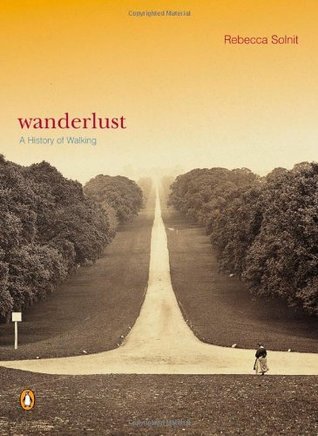More on this book
Community
Kindle Notes & Highlights
Sir, I have received your new book written against the human race, and I thank you. . . . Never was so much intelligence used to make us stupid. While reading it, one longs to go on all fours.—voltaire to rousseau, on the discourse on the origin of inequality
Spring had come after an unusually wet winter, and the hills had turned that riotous, exuberant green I forget and rediscover every year.
Moving on foot seems to make it easier to move in time; the mind wanders from plans to recollections to observations.
It is the movement as well as the sights going by that seems to make things happen in the mind, and this is what makes walking ambiguous and endlessly fertile: it is both means and end, travel and destination.
Many people nowadays live in a series of interiors—home, car, gym, office, shops—disconnected from each other. On foot everything stays connected, for while walking one occupies the spaces between those interiors in the same way one occupies those interiors. One lives in the whole world rather than in interiors built up against it.
Walking, I realized long ago in another desert, is how the body measures itself against the earth.
His father had told him, and he had told me, that the landscape never looks the same coming and going, so turn around periodically and look at the view you’ll see coming back.
San Francisco has long been called the most European of American cities, a comment more often made than explained. What I think its speakers mean is that San Francisco, in its scale and its street life, keeps alive the idea of a city as a place of unmediated encounters, while most American cities are becoming more and more like enlarged suburbs, scrupulously controlled and segregated, designed for the noninteractions of motorists shuttling between private places rather than the interactions of pedestrians in public ones.
“Not to find one’s way in a city may well be uninteresting and banal. It requires ignorance—nothing more. But to lose oneself in a city—as one loses oneself in a forest—that calls for quite a different schooling.
The mostly young, mostly poor, unmarried women and girl children arrested were seldom found innocent; many were incarcerated behind the high walls of Saint Lazare prison, where they lived in dire circumstances, cold, malnourished, unwashed, overworked, and forbidden to speak. They were released when they agreed to register as prostitutes, while women who ran away from licensed brothels were given the choice of either returning to the brothel or being sent to Saint Lazare—thus women were forced into rather than out of prostitution.
Jane Holtz Kay, in her book on the impact of cars, Asphalt Nation, writes of a study that compared the lives of ten-year-olds in a walkable Vermont small town and an unwalkable southern California suburb. The California children watched four times as much television, because the outdoor world offered them few adventures and destinations. And a recent study of the effects of television on Baltimore adults concluded that the more local news television, with its massive emphasis on sensational crime stories, locals watched, the more fearful they were. Staying home to watch TV discouraged them
...more


